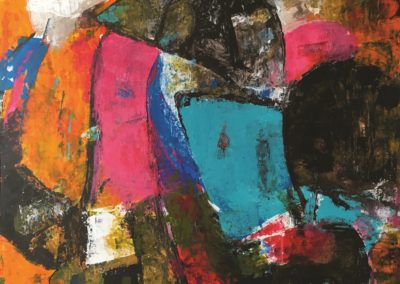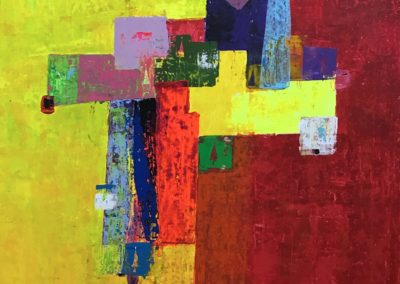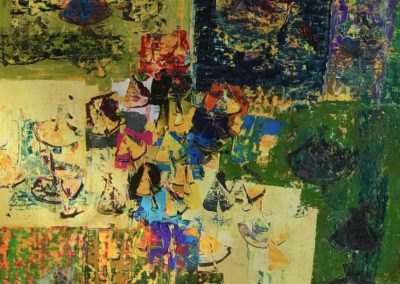ANDREA PIRANI has always shown an interest in any form of artistic expression. Since he was young he has been attracted by music and has cultivated his passion playing with ...READ MORE ↴
ANDREA PIRANI has always shown an interest in any form of artistic expression. Since he was young he has been attracted by music and has cultivated his passion playing with Italian and foreign bluesmen.
In the 1990s, hiswork experience with the world of the performing arts and museum settings favoured contact with set designers, choreographers, directors and painters who further influenced his inherent attitude to art and pressed him on the way to the research of a personal expression.
Even if he has not taken any academic study, in the 1970s he was educated to art thanks to Ms.Gisella Breseghello’s teaching.
In the 1980s he made a start in fine arts with wood sculptures; but what determined his artistic research was his meeting with Gabbris Ferrari, whom he is linked to both as a professional and a friend.
Pirani’s early works also show aclear influence of Giampaolo Berto, Tono Zancanaro and Emanuele Luzzati. In the following years, his interest in authors like Rudolf Steiner and Helena Blavatsky led him to combine philosophic meditation, spirituality and artistic expression.
This long process of human, technical, and artistic consciousness has found expression in more than four hundred works, mainly mixed technique and acrylic on paper and wood board paintings, that have granted him recognition in various exhibitions both in Italy and abroad (critics’award 2014 at the ROA Gallery in London; finalist at the Gambino Award 2015 in Venice; “Best Artist” award 2016 at the “Spazio Cerere” in Rome).
Pirani’s works have obtained various reviews and are printed in art magazines. His works “Migranti” (Migrants), “Il ballo in maschera” (A Masked Ball) and “La metafora dei coni rotanti” (The metaphor of rotating cones) have been published in issues 51, 52 and 53 of the Catalog of Modern Art by Editoriale Giorgio Mondadori, where Pirani is included into the “IS” category for his national and international recognition by some well-known criticism.
Some of his works are in the collections and heritage of museums, art galleries and prominent foundations (“Accademia dei Concordi”in Rovigo, “Museo del Tesoro del Duomo” in Vigevano, “Pinacoteca di Arte Moderna” in Allumiere).



